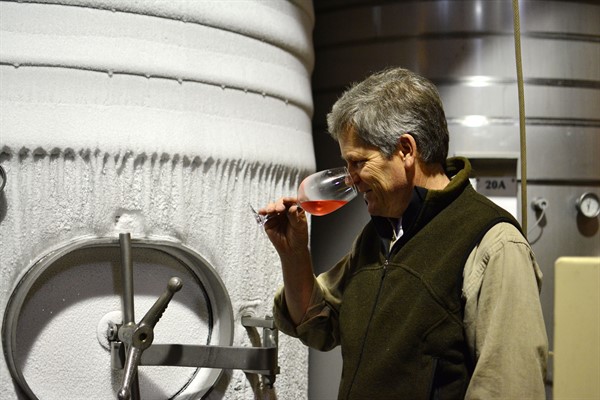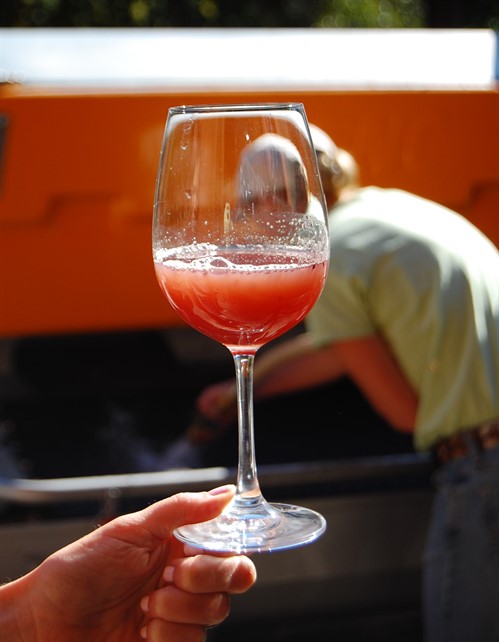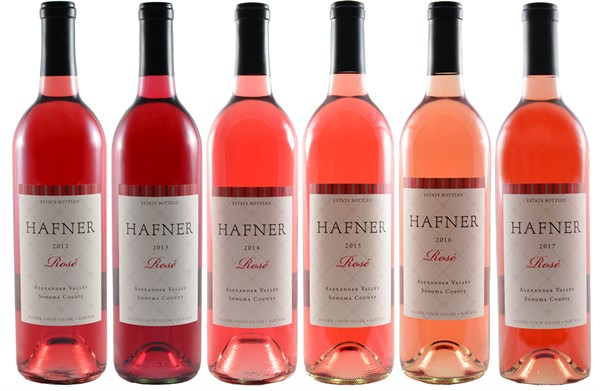How to Make Rosé
- May 31, 2018
Rosé has become a popular new wine, not just at Hafner, but across the country. Producing a pink wine is a bit different than making a red or white wine, so I thought I’d share the production methods behind our Rosé.
There are two techniques used to make Rosé, and we use both of them here at Hafner Vineyard. The first technique is how we started making Rosé. It is called “saignée” which is a French term that means “to bleed”. Hence, just after the grapes arrive at the winery, we drain the first 10% of the juice from the gondola. (See the photo below.) We do this because it increases the skin to juice ratio for the remaining grapes, which in turn increases the concentration of color and flavor in the resulting red wine, our Next Red. The other technique for making Rosé is to transfer the red grapes direct to the press when they arrive at the winery; this is the same process used for making white wines.
The other technique for making Rosé is to transfer the red grapes direct to the press when they arrive at the winery; this is the same process used for making white wines.
Post-draining or post-pressing, we then ferment the juice dry in temperature-controlled stainless steel tanks.
Our Rosé is made of Malbec. We decided to use the Malbec variety for two reasons: it has bright fruit-forward flavors and its grapes are large and juicy. During the Rosé fermentation, the winery is filled with the aromas of sweet watermelon and fresh raspberries. We capture those aromas by fermenting the wine cool at about 51° F.
One of the challenges in making Rosé is maintaining consistency in color from year to year. Our first year of commercial Rosé production was 2011. In that year, the Malbec skins were already releasing their color when the grapes arrived at the winery and the resulting wine had an intriguing soft red, dark pink color that we loved. We, of course, wanted to duplicate that color the next year and followed the same steps as in 2011; to our surprise, the color was considerably lighter. We quickly learned that the ease with which the color is released from the skins can vary greatly from year to year. We monitor the color from the moment the grapes arrive at the winery. If the color release is less than we want, we will wait an hour or two after fruit reception to bleed juice away from the skins.
To complicate matters, as the juice ferments into wine, some of the color is lost; in other words, the juice that you begin with always ends up being lighter in hue, so when we are determining the juice color, we always err on the side of a little darker than we want and then work to make sure that the finished wine is a shade lighter than it began. Although color is not integral to the flavor of Rosé, it is the intriguing and alluring element that makes Rosé, Rosé.
There is a third and far less popular technique for making Rosé; it is usually referred to as the “Oops Technique” where red and white wines are inadvertently blended together. The employee responsible for this action usually doesn’t last long. We have never used the “Oops Technique”. Knock on wood.
We invite you to learn more about why we make Rosé of Malbec and if you would like to try our Rosé, it is available from April until it sells out. Email us or shop here to place an order.



